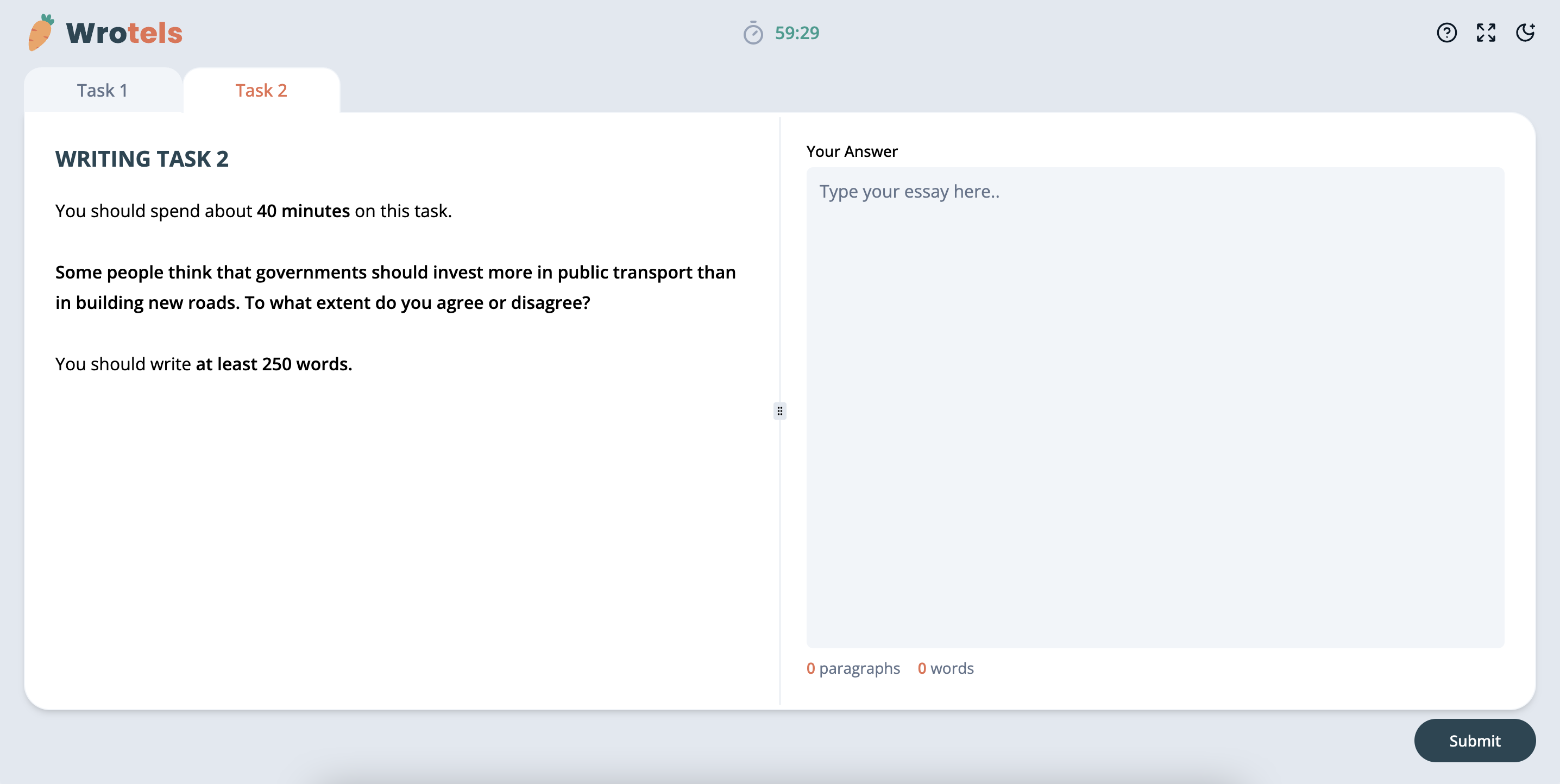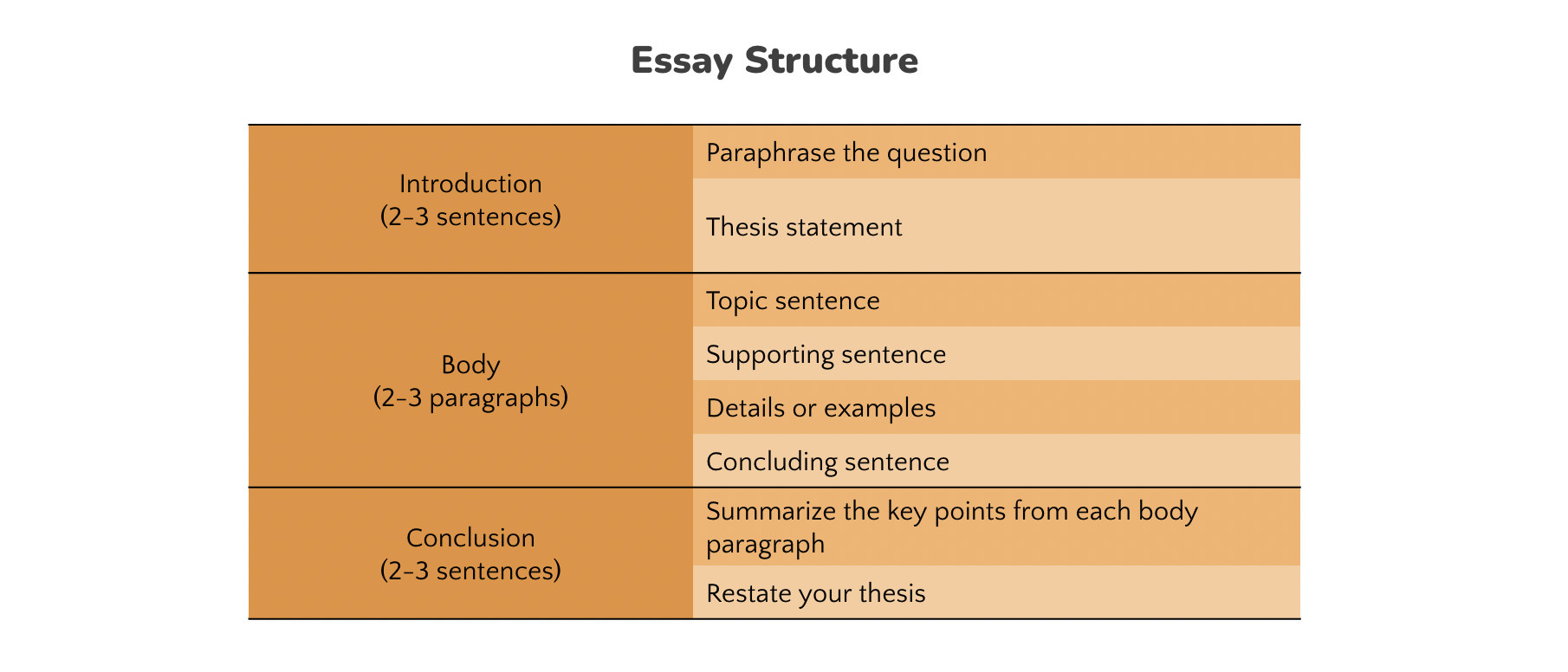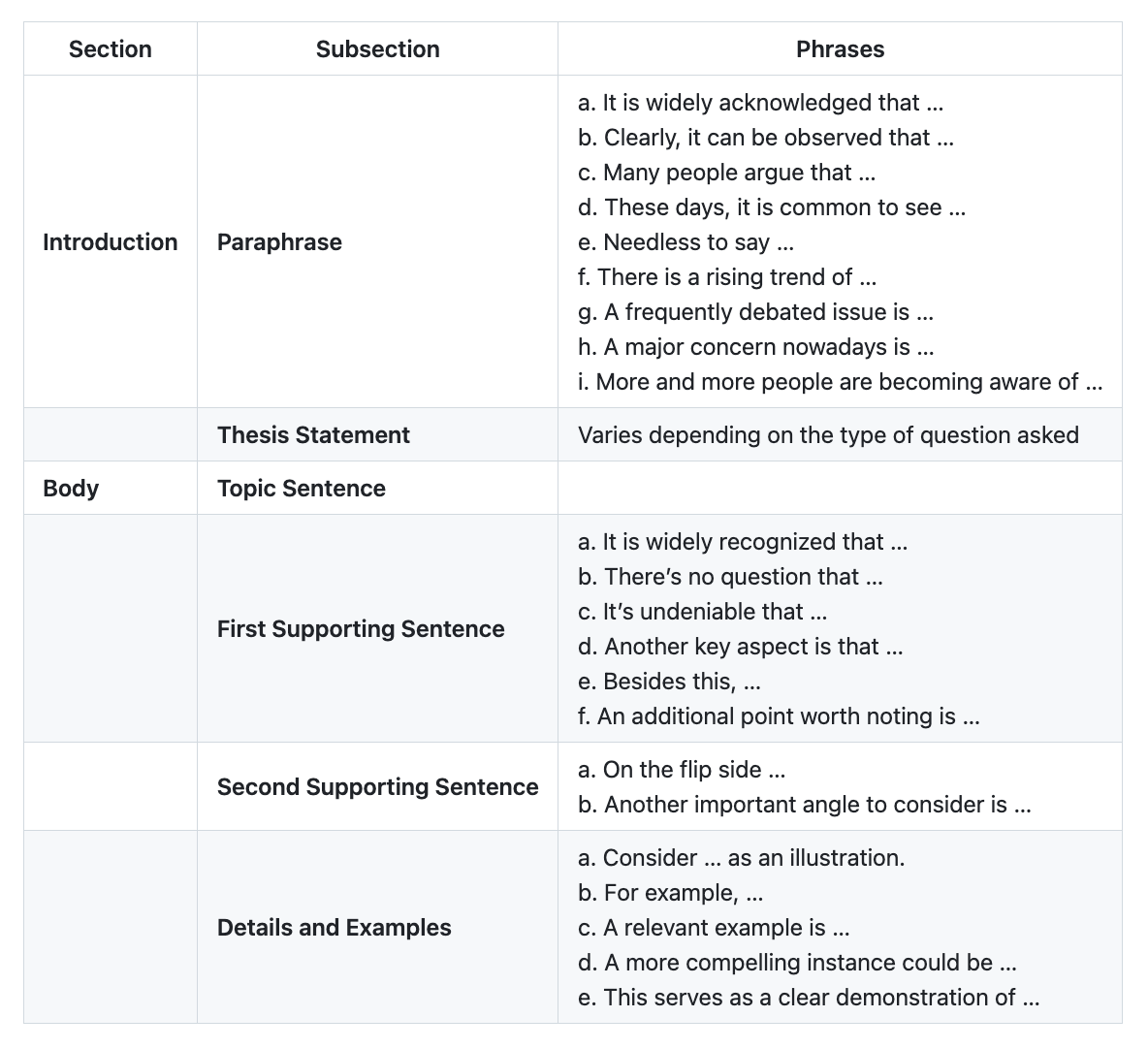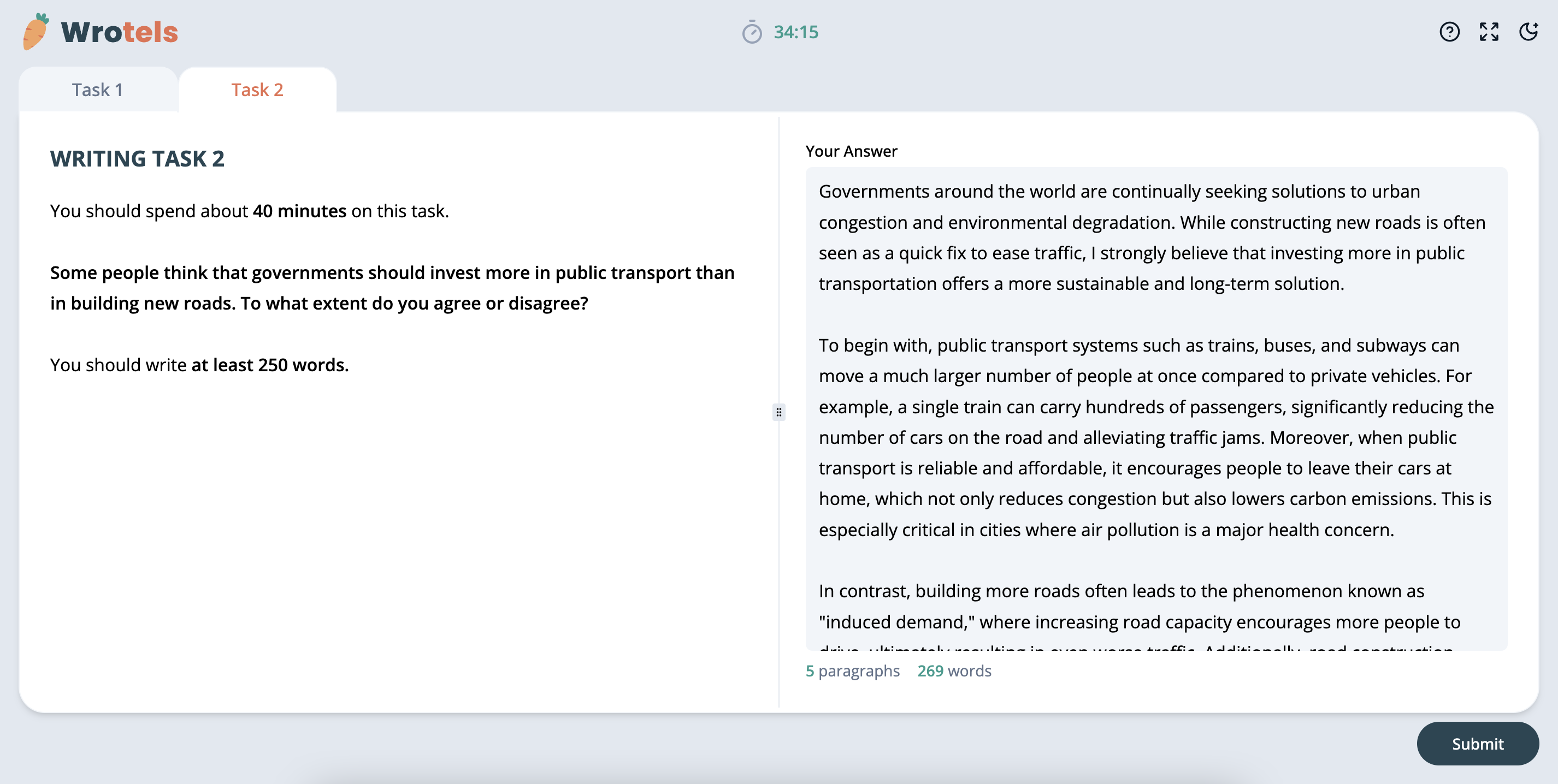Mastering IELTS Writing Task 2: Structure, Strategy & Tips

Imagine sitting in the IELTS exam room. You've completed Task 1 and now turn the page to Task 2 — the essay. You read the question: "Some people think that governments should invest more in public transport than in building new roads. To what extent do you agree or disagree?" Sound familiar?
This moment can feel overwhelming — but it doesn't have to be.
At Wrotels, we’ve designed an AI-powered platform to simulate real IELTS Writing conditions and help you master this crucial task. In this post, we’ll walk you through the types of questions you’ll encounter, show you how to organize your ideas like a pro, and share key strategies to level up your writing score.
Understanding the Question Types
Every great journey starts with understanding the terrain. In IELTS Writing Task 2, there are several question types — and each requires a slightly different approach.
1. Opinion-led Essay
"To what extent do you agree or disagree?"
Example: Governments should invest more in public transport than in building new roads.
2. Argument-led Essay
"Discuss both views and give your own opinion."
Example: Unpaid community service should be a compulsory part of high school. Discuss both views and give your opinion.
3. Cause–Consequence Essay
"What do you think may be the reasons for this? What problems might this cause?"
Example: Traffic congestion in cities is increasing. Why is this happening? What are the consequences?
4. Cause–Solution Essay
"What are the main factors that contributed to this? What solutions can you suggest?"
Example: More people suffer from stress-related illnesses. Why? What can be done?
5. Consequence–Solution Essay
"What are some of these problems? What solutions can you suggest?"
Example: More people are choosing to live alone. What problems does this create, and how can they be solved?
6. Discussion Essay
"What are the advantages and disadvantages?"
Example: Many children are encouraged to get a part-time job. What are the pros and cons?
7. Mixed Essay
A combination of any two question types above.
The Secret to a Great Essay: Structure

Think of your essay like a sandwich — strong top and bottom (introduction and conclusion), and satisfying fillings (body paragraphs).
Introduction (2–3 Sentences)
- Paraphrase the question
- State your thesis (your position)
- Preview your main points
Body Paragraphs (2–3 Paragraphs)
Each paragraph should have:
- A clear topic sentence
- Supporting arguments
- Specific examples or evidence
- A concluding sentence
Conclusion (2–3 Sentences)
- Summarize key points
- Restate your thesis differently
- Optionally, end with a thought-provoking statement or recommendation
Telling a Story with Cause & Effect
Understanding cause and effect is key to crafting logical, convincing essays. Here are two simple frameworks:
Example 1: Cause → Effect
- Cause: Hole in the ozone layer
- Effect: More heat → Less water → Fewer resources
Example 2: Effect → Cause
- Effect: Widespread hunger
- Cause: Overpopulation → Higher food demand → Shortages
Use these logical flows in your body paragraphs to keep your writing coherent and connected.
Example in Action: Topic – Internet
Let’s break down a paragraph using the structure we talked about:
- Topic Sentence: The internet offers numerous benefits for students' academic development.
- Supporting Idea 1: It provides access to vast amounts of information.
- Example: Platforms like Google Scholar offer journal articles and tutorials.
- Supporting Idea 2: It also supports remote collaboration.
- Example: Students can use Zoom or Google Docs for group projects.
Simple, clear, and impactful.
Building a Strong Introduction
Let’s practice with a real IELTS question:
Question: If countries are serious about solving traffic problems, they should tax private cars heavily and use the money to provide free rail travel. Do you agree or disagree?
Sample Introduction:
Traffic congestion is a major issue affecting urban areas worldwide. In my view, introducing high taxes on private vehicles and investing the revenue into public transport is an effective and sustainable solution.
Short, sharp, and sets the tone.
Wrapping It All Up: Writing the Conclusion
Good conclusions bring everything full circle.
Sample Conclusion:
In conclusion, traffic congestion is a growing problem that requires immediate attention. Heavily taxing car owners and using the revenue to improve public transport is, in my opinion, a practical way to ease urban traffic and protect the environment.
Useful Phrases to Boost Your Score

Final Tips from Wrotels
At Wrotels, we believe preparation breeds confidence. Here's how to make your essay stand out:
- Read the question carefully and highlight keywords
- Decide your position or opinion (if needed)
- Plan your key points before writing
- Use linking phrases to ensure a smooth flow
- Practice under real test conditions

Ready to Practice?
Sign in to Wrotels and try our AI-powered IELTS writing simulator. Get instant feedback, identify your weak points, and track your progress.
By mastering structure, strategy, and storytelling — and practicing consistently — you’ll be ready to tackle any IELTS Writing Task 2 prompt with clarity, confidence, and critical thinking.
Let’s write your success story, together. 🚀